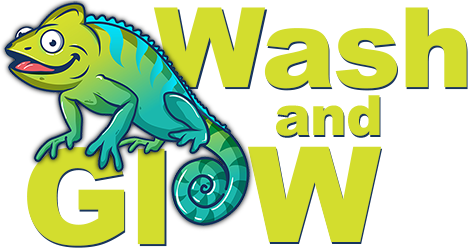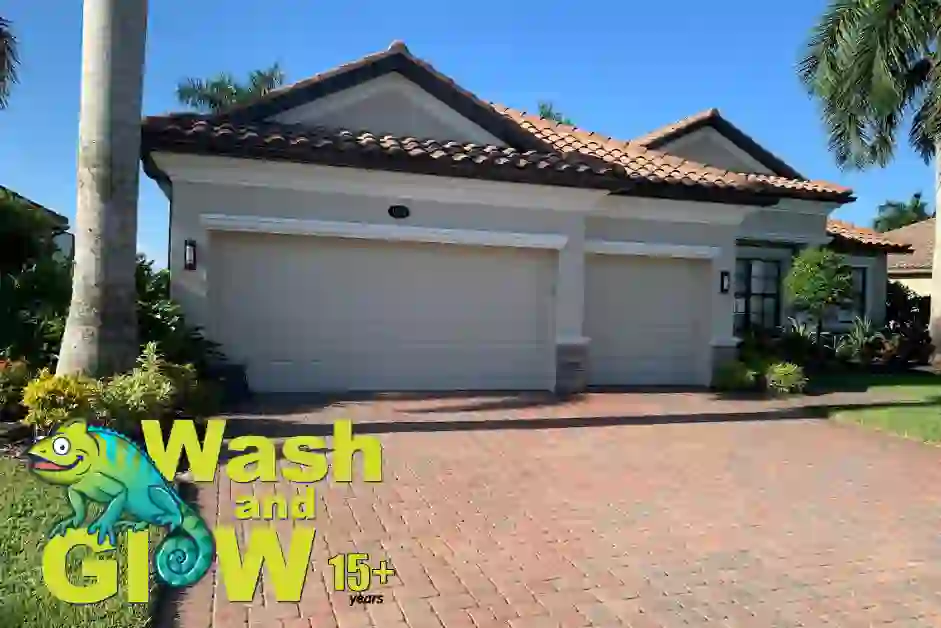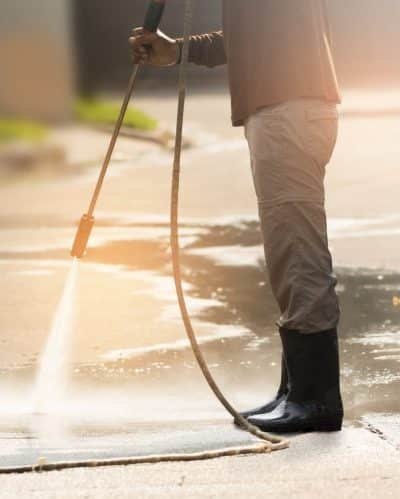Keeping your driveway clean not only enhances your home’s curb appeal but also extends the lifespan of the surface. Over time, dirt, oil stains, mildew, and algae accumulate on driveways, making them look dull and worn. One of the most effective ways to restore your driveway’s original look is by power washing. This powerful cleaning method uses pressurized water to remove even the most stubborn grime, leaving your driveway spotless.
Power washing a driveway may sound simple, but doing it right requires the right tools, techniques, and preparation. Whether your driveway is concrete, asphalt, brick, or paver, the type of material plays a significant role in how you should approach cleaning it. Additionally, using the wrong pressure settings or cleaning solutions can damage the surface or even strip away the sealant, leading to costly repairs. In this article, we’ll walk you through the process of power washing your driveway, from preparation to post-wash sealing.
This comprehensive guide will also cover the benefits of power washing, safety precautions, and tips to ensure professional-level results. Whether you’re a first-timer or someone looking to refine your skills, you’ll find everything you need to know here.
Benefits of Power Washing Your Driveway
Enhances Curb Appeal
A clean driveway instantly upgrades the exterior appearance of your home. Over time, driveways accumulate layers of dirt, tire marks, and grease stains, which can make the entire property look unkempt. Power washing removes these unsightly blemishes, giving your driveway a fresh and polished look. A well-maintained driveway also creates a great first impression, which can be especially beneficial if you’re planning to sell your home.
Prevents Long-Term Damage
Regular power washing is not just about aesthetics—it also protects your driveway from long-term damage. Dirt, mold, and algae can weaken the surface over time. For instance, in concrete driveways, trapped moisture can lead to cracking during freeze-thaw cycles. On asphalt surfaces, oil and gas spills can degrade the material, causing potholes and warping. Power washing removes these harmful substances, preventing premature deterioration.
Improves Safety
A dirty driveway can be a safety hazard. Algae and mildew create slippery surfaces, increasing the risk of slips and falls, especially during rainy seasons. Additionally, oil and grease spills can make certain areas hazardous to walk or drive on. Power washing eliminates these risks by thoroughly cleaning the surface, making it safer for both pedestrians and vehicles.
Preparing Your Driveway for Power Washing
Gather the Right Tools and Equipment
Before you start, ensure you have the right tools for the job. A high-quality power washer is essential, and you can either rent or purchase one based on your needs. Look for a model with at least 2,000 to 3,000 PSI (pounds per square inch) for driveway cleaning. You’ll also need a stiff-bristled brush, degreaser or driveway detergent, and safety gear such as gloves and goggles.
For large driveways, consider using a surface cleaner attachment. This tool provides even cleaning and reduces streaks, making the process faster and more efficient. Ensure your power washer comes with adjustable nozzles, such as 25-degree or 40-degree tips, to customize the pressure according to the surface material.
Remove Debris and Pre-Treat Stains
Start by clearing your driveway of any debris, such as leaves, rocks, and sticks. Sweep the surface thoroughly to remove loose dirt and dust. If there are tough stains like oil or grease, pre-treat them with a degreaser. Apply the degreaser directly to the stains and scrub the area with a stiff-bristled brush. Let it sit for 10–15 minutes before power washing to loosen the grime.
If your driveway has moss or mildew, use a specialized cleaning solution to target these growths. Avoid using bleach directly, as it can damage certain surfaces and harm nearby plants.
Test the Power Washer
Before you begin cleaning the entire driveway, test the power washer on a small, inconspicuous area. This allows you to check the pressure setting and ensure it’s safe for the material. For instance, concrete can handle higher pressure, but brick or paver driveways may require a gentler approach to avoid surface damage.
Power Washing Techniques for Different Driveway Surfaces
Concrete Driveways
Concrete is one of the most durable driveway materials and can withstand high-pressure cleaning. Use a 25-degree nozzle for effective cleaning without damaging the surface. Start from the top of the driveway and work your way down, moving the nozzle in consistent, sweeping motions. Avoid holding the nozzle too close to the surface, as this can etch the concrete.
For deep-set stains, apply a driveway detergent using the power washer’s detergent tank. Let the solution sit for a few minutes before rinsing it off. After cleaning, consider applying a concrete sealant to protect the surface from future stains and wear.
Asphalt Driveways
Asphalt is softer than concrete, so you’ll need to use a lower pressure setting—ideally below 2,000 PSI. A 40-degree nozzle works best for evenly distributing the water pressure. Avoid using hot water, as it can soften the asphalt and cause damage.
To clean an asphalt driveway, pre-treat any stains with a mild detergent and scrub them with a brush. Then, power wash the surface, working in sections to ensure thorough cleaning. After washing, inspect the driveway for any cracks or potholes that may need repair.
Brick and Paver Driveways
Brick and paver driveways require extra care to avoid loosening the joints or damaging the surface. Use a 40-degree nozzle and a pressure setting under 1,500 PSI. Hold the nozzle at a slight angle to prevent water from dislodging the sand between the pavers.
If the surface has moss or algae, use a specialized cleaner designed for pavers. Rinse thoroughly with the power washer, and reapply sand to the joints if necessary. Sealing the pavers after cleaning will enhance their appearance and prevent future staining.
Safety Tips for Power Washing
Wear Protective Gear
Power washing involves high-pressure water that can cause injuries if mishandled. Always wear safety goggles to protect your eyes from debris and gloves to safeguard your hands. Non-slip shoes are also essential, as driveways can become slippery during the cleaning process.
Avoid Electrical Hazards
Keep an eye out for electrical outlets, extension cords, and nearby appliances when power washing. Water and electricity don’t mix, so maintain a safe distance from any electrical sources. If your power washer is electric, use a GFCI (ground fault circuit interrupter) outlet to prevent electrical shocks.
Protect Surrounding Areas
Power washing can create a lot of splatter, so it’s important to protect nearby surfaces and plants. Cover delicate landscaping with plastic sheeting and move any outdoor furniture or decorations away from the driveway. Be cautious of where the water runoff goes to avoid flooding nearby areas.
Post-Wash Maintenance and Sealing
Let the Surface Dry
After power washing, give your driveway ample time to dry completely. Depending on the weather, this may take a few hours or up to a full day. Avoid driving or walking on the surface until it’s fully dry to prevent tracking dirt onto the clean driveway.
Apply a Sealant
Sealing your driveway after power washing is an excellent way to protect it from future stains, moisture, and UV damage. Choose a sealant that’s appropriate for your driveway material, such as acrylic sealers for concrete or asphalt sealers for blacktop driveways. Apply the sealant using a roller or sprayer, following the manufacturer’s instructions.
Schedule Regular Cleanings
To keep your driveway looking its best, schedule power washing at least once a year. If you live in an area with frequent rain, snow, or heavy traffic, consider cleaning it more often. Regular maintenance prevents the buildup of grime and ensures your driveway remains safe and attractive.
FAQs
How often should you power wash your driveway?
The frequency of power washing depends on your location and usage. In general, driveways should be cleaned once a year to prevent buildup. However, if your driveway experiences heavy traffic, frequent spills, or is prone to moss and algae growth, more frequent cleaning may be necessary.
What is the best PSI for cleaning a driveway?
For concrete driveways, a pressure washer with 2,000–3,000 PSI is ideal. Asphalt driveways require lower pressure, typically below 2,000 PSI. For delicate surfaces like brick or pavers, use a setting under 1,500 PSI to avoid damage.
Can you power wash a driveway without a detergent?
Yes, you can power wash a driveway using only water, but detergents help break down tough stains like oil and grease. Using a driveway-specific detergent enhances the cleaning process and ensures better results, especially for stubborn grime.
Is sealing a driveway necessary after power washing?
Sealing your driveway is highly recommended after power washing, as it protects the surface from stains, moisture, and UV damage. A sealant also enhances the appearance of the driveway and prolongs its lifespan.
Can power washing damage a driveway?
Power washing can damage a driveway if the pressure is too high or the nozzle is held too close to the surface. Always use the appropriate pressure settings and test the washer on a small area before cleaning the entire driveway.


